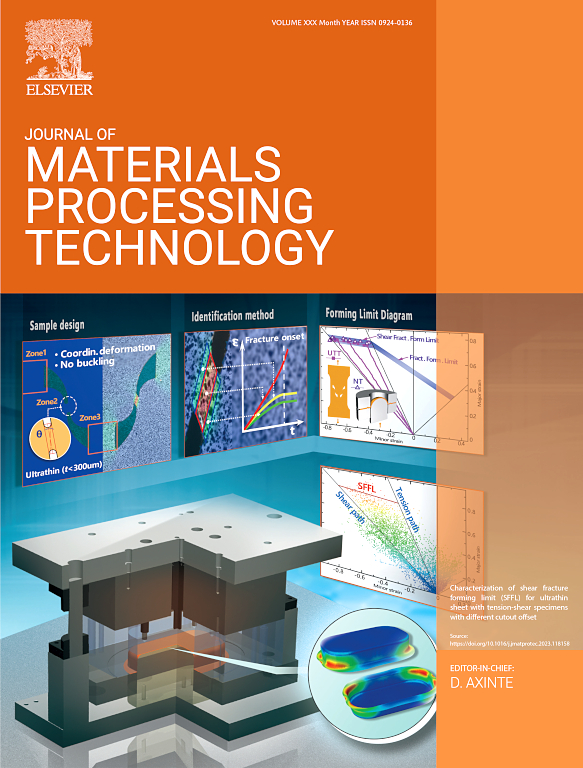On the viability of in-situ alloying via process gas mixtures in wire arc directed energy deposition of austenitic stainless steel
IF 6.7
2区 材料科学
Q1 ENGINEERING, INDUSTRIAL
Journal of Materials Processing Technology
Pub Date : 2025-01-20
DOI:10.1016/j.jmatprotec.2025.118738
引用次数: 0
Abstract
Additively manufactured stainless steel structures are produced under different shielding gas atmospheres, namely inert argon blended with variants in the composition of nitrogen and helium. The present study investigates the concept of in-situ interstitial nitrogen alloying via the shielding gas atmosphere in arc- and wire-based directed energy deposition of austenitic chromium-nickel stainless steel. A comparable deposition- and build-up characteristic was observed for all deposits, irrespective of the shielding gas used. A slight increase in spatter formation and a marginal reduction in average layer height was observed when the helium content was increased. The chemical composition of the deposits can be actively influenced by the shielding gas atmosphere: Addition of nitrogen to the shielding gas atmosphere directly increases the nitrogen content in the deposits produced and thus changes the microstructure and the corresponding mechanical properties. With increasing nitrogen content, the primary solidification mode changes from ferritic-austenitic to austenitic-ferritic to almost pure austenite. Deposits fabricated with pure argon inert gas atmosphere show a dual-phase microstructure with a considerable amount of vermicular delta-ferrite embedded in the secondary austenitic-matrix, while the addition of nitrogen changes the microstructure to primary columnar/cellular grown austenite dendrites with lath-shaped secondary delta-ferrite embedded in the interdendritic zones; the proportion of lath-shaped delta-ferrite decreases with increasing nitrogen content. Helium addition to the nitrogen in the shielding atmosphere leads to a further refinement of the columnar/cellular grown primary austenite dendrites. The changes in the chemical composition and microstructure are also reflected in the associated mechanical properties. In-situ alloying of nitrogen acts as interstitial solid solution strengthening and increases the tensile strength, the strain-hardening rate, though reduces the fracture strain compared to deposits produced under pure argon atmosphere. By adding helium and due to its refining effect, the fracture strain can be fully recovered. Nevertheless, the strengthening effect of nitrogen is also limited, and excessive nitrogen alloying and interstitial solid solution strengthening leads to premature failure and fully brittle fracture of the excessively nitrogen alloyed specimens.
求助全文
约1分钟内获得全文
求助全文
来源期刊

Journal of Materials Processing Technology
工程技术-材料科学:综合
CiteScore
12.60
自引率
4.80%
发文量
403
审稿时长
29 days
期刊介绍:
The Journal of Materials Processing Technology covers the processing techniques used in manufacturing components from metals and other materials. The journal aims to publish full research papers of original, significant and rigorous work and so to contribute to increased production efficiency and improved component performance.
Areas of interest to the journal include:
• Casting, forming and machining
• Additive processing and joining technologies
• The evolution of material properties under the specific conditions met in manufacturing processes
• Surface engineering when it relates specifically to a manufacturing process
• Design and behavior of equipment and tools.
 求助内容:
求助内容: 应助结果提醒方式:
应助结果提醒方式:


